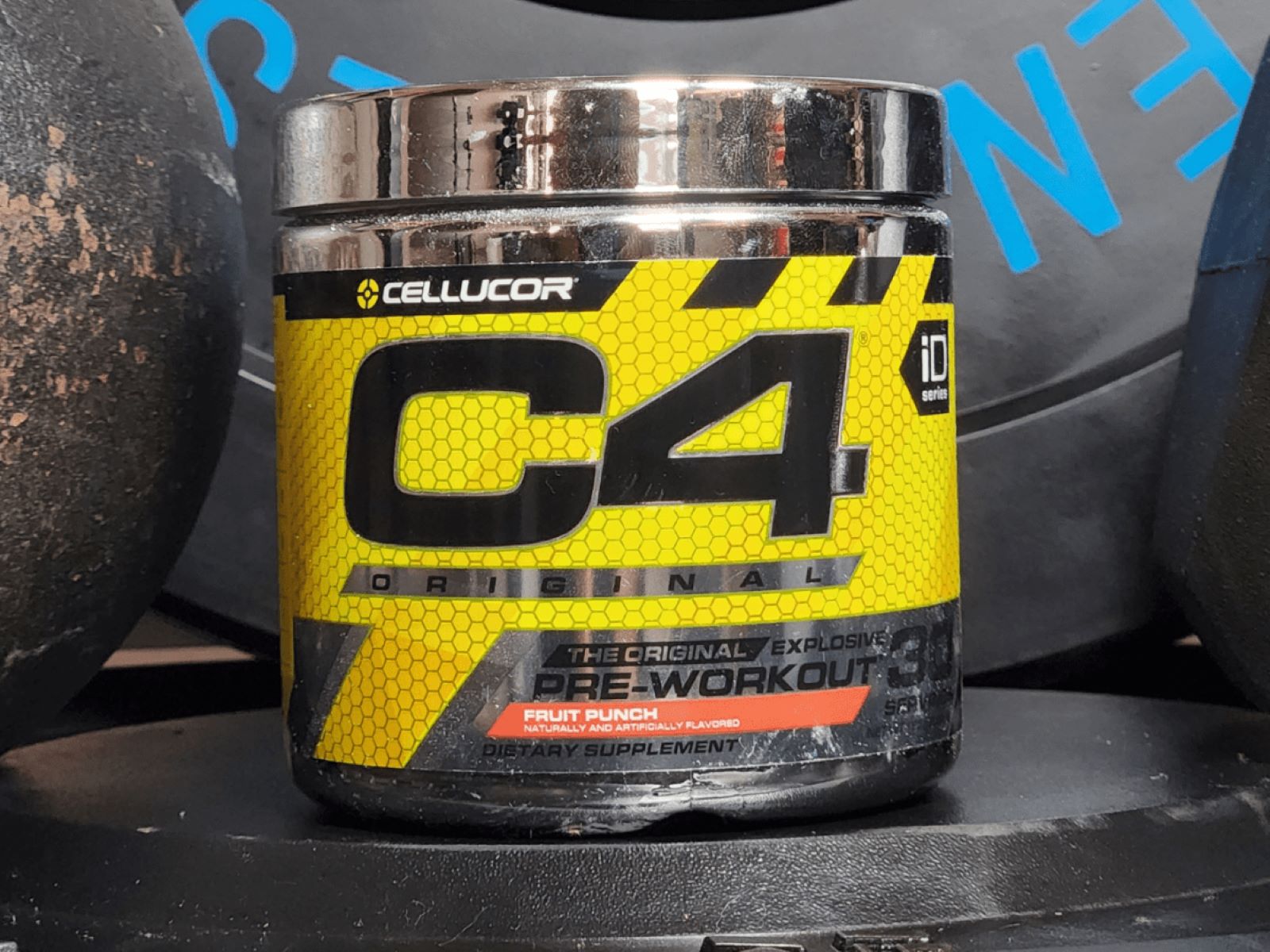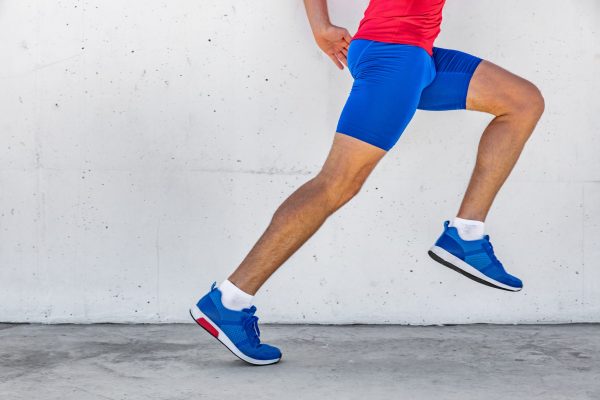Home>Misc>Featured>Which Fitness Tracker Does Not Cause A Rash
Featured
Which Fitness Tracker Does Not Cause A Rash
Published: October 15, 2023
Discover the top featured fitness tracker that guarantees no skin rash, providing a comfortable and reliable solution for your fitness tracking needs.
Introduction: Exploring Fitness Tracker Rash
Fitness trackers have become increasingly popular in recent years as people strive to monitor their health and fitness goals. These wearable devices provide valuable data on our daily activities, sleep patterns, heart rate, and more. However, while fitness trackers offer a range of benefits, some users have reported experiencing skin irritations and rashes after wearing them for extended periods.
This article aims to shed light on the issue of fitness tracker rash – what it is, why it happens, and how to avoid it. By understanding the causes and preventative measures, users can make informed decisions when choosing a fitness tracker that fits their lifestyle and skin sensitivity.
Whether you’re a fitness enthusiast or someone looking to track their daily activities, it’s essential to be aware of the potential risks and precautions to ensure a comfortable and rash-free experience with your fitness tracker.
In the following sections, we will delve deeper into the common causes of fitness tracker rash, highlight fitness trackers that may be more likely to cause skin irritations, and provide alternative options and prevention tips for those who are prone to developing a rash.
Let’s begin by understanding the phenomenon of fitness tracker rash and why it can occur.
Understanding Fitness Tracker Rash
Fitness tracker rash, also known as contact dermatitis, is a skin irritation or allergic reaction that occurs after wearing a fitness tracker for an extended period. The rash typically appears as red, itchy, and inflamed patches on the skin, often in the area where the device is worn.
The main cause of fitness tracker rash is the materials used in the construction of the device, particularly the wristband. Many fitness trackers are made of materials such as rubber, silicone, or plastic, which can cause skin sensitivity and irritation in some individuals. The constant friction and moisture from sweating during exercise can further exacerbate the issue.
It’s important to note that not everyone will experience a rash from wearing a fitness tracker. Factors such as individual skin sensitivity, wearing the device for long periods without cleaning or taking breaks, and pre-existing skin conditions can increase the likelihood of developing a rash.
When the skin comes into contact with the potentially irritating materials used in fitness trackers, it triggers an immune response, leading to the development of the rash. The body releases chemicals that cause inflammation, resulting in the classic symptoms of redness, itching, and swelling.
While fitness tracker rash is generally not a serious medical condition, it can be uncomfortable and bothersome. If left untreated or improperly managed, it may lead to more severe skin problems or secondary infections.
If you suspect that you have developed a fitness tracker rash, it’s important to discontinue wearing the device and give your skin a chance to heal. In the next section, we will explore the common causes of fitness tracker rash and discuss which fitness trackers are more likely to cause these skin irritations.
Common Causes of Fitness Tracker Rash
Several factors can contribute to the development of a fitness tracker rash. Understanding these causes can help you make an informed decision when choosing a fitness tracker and take necessary precautions to prevent skin irritations.
1. Material Sensitivity: Different individuals may have varying levels of sensitivity to certain materials used in fitness trackers. The most common culprits are rubber, silicone, and plastic, which can cause allergic reactions and skin irritation in some people. It’s crucial to note that not all fitness trackers are created equal when it comes to the materials used in their construction.
2. Friction and Pressure: Continuous friction and pressure from the fitness tracker’s wristband can irritate the skin, leading to rashes. This is especially true during intense physical activities or workouts where the device is constantly in contact with the skin, increasing the likelihood of irritation and rash development.
3. Moisture and Sweat: When we exercise, we naturally perspire, leading to moisture buildup between the fitness tracker and our skin. Prolonged exposure to moisture can create a favorable environment for bacteria to thrive and contribute to skin irritation and rash formation.
4. Poor Cleaning Habits: Regular cleaning is essential to remove dirt, sweat, and bacteria buildup on the fitness tracker. Neglecting to clean the device can lead to increased skin sensitivity and the potential for developing a rash.
5. Allergic Reactions: Some individuals may have underlying allergic conditions or sensitivities that make them more prone to developing an allergic reaction when wearing a fitness tracker. These allergic reactions can manifest as rashes and skin irritations.
It’s important to analyze these common causes and consider whether any of these factors may affect you. In the next section, we will highlight specific fitness trackers that have been reported to cause skin irritations and those that are less likely to cause a rash.
Fitness Trackers That May Cause a Rash
While many fitness trackers are designed to be comfortable and wearable for prolonged periods, certain models have been associated with a higher incidence of causing skin irritations and rashes. It’s important to note that everyone’s skin reacts differently, and what may cause a rash in one person may not affect another. However, it’s worth considering the following fitness trackers that have been reported to have a higher likelihood of causing skin issues:
1. Fitbit Charge 2: This popular fitness tracker has been known to cause skin irritation and rashes, particularly among users with sensitive skin. The friction and constant pressure from the band, coupled with the materials used, may contribute to these reactions. Fitbit has since addressed this issue with the release of newer models and alternative band options.
2. Garmin Vivosmart HR: Users have reported developing rashes and skin irritations after wearing the Garmin Vivosmart HR for extended periods. The plastic material used in the band and the tightness of the fit have been cited as potential causes. Proper cleaning and taking breaks from wearing the device can help mitigate these issues.
3. Samsung Galaxy Fit: Some users have experienced skin irritations, particularly on their wrists, after wearing the Samsung Galaxy Fit. The combination of the materials used, such as rubber and plastic, along with moisture buildup from sweat, can contribute to the development of rashes. Regular cleaning and allowing the skin to breathe can reduce the likelihood of skin issues.
4. Xiaomi Mi Band: While the Xiaomi Mi Band has gained popularity for its affordability and features, some users have reported experiencing skin rashes and redness after wearing it continuously. The silicone material used in the band, combined with friction and moisture, can trigger skin sensitivities. Taking breaks from wearing the band and practicing proper hygiene can alleviate these issues.
It’s important to note that these examples are not meant to discredit the overall quality and functionality of these fitness trackers. Many people have successfully worn these devices without experiencing any skin irritations. If you have a known history of skin sensitivities or allergies, it may be worth exploring other options that are less likely to cause a rash.
In the next section, we will highlight fitness trackers that have proven to be less likely to cause skin irritations, providing alternative options for those seeking a comfortable and rash-free experience.
Fitness Trackers That Are Less Likely to Cause a Rash
If you’re concerned about the potential for developing a fitness tracker rash, there are options available that have a lower likelihood of causing skin irritations. These fitness trackers prioritize comfort and skin-friendly materials, making them more suitable for individuals with sensitive skin. Consider the following options:
1. Apple Watch: The Apple Watch has gained popularity for its sleek design and wide range of health and fitness features. It is designed with various band options, including silicone, fabric, and leather, allowing users to choose a material that suits their skin sensitivity. The multitude of band choices makes it easier for individuals with sensitive skin to find a comfortable and rash-free option.
2. Fitbit Inspire 2: Fitbit has made improvements in their Inspire line to address skin irritations. The Fitbit Inspire 2 features a lightweight and breathable design with a comfortable band that minimizes friction and pressure on the skin. The materials used are less likely to cause allergic reactions or skin sensitivities.
3. Garmin Venu: The Garmin Venu offers a high-resolution AMOLED display wrapped in a comfortable and skin-friendly band. The materials used in the band are hypoallergenic and designed to reduce the likelihood of skin irritations. The Venu also allows for easy band interchangeability, giving users the flexibility to choose a material that works best for their skin.
4. Huawei Band 6: The Huawei Band 6 features a lightweight and breathable silicone band that is unlikely to cause skin irritations. The soft and flexible material ensures a comfortable fit, even during prolonged use. Additionally, the band is designed to allow air circulation, minimizing moisture buildup and reducing the chances of developing a rash.
While these fitness trackers have a lower risk of causing skin irritations, it’s important to remember that individual reactions may vary. Before purchasing a fitness tracker, it’s advisable to try it on and assess how your skin reacts to the materials and fit. Additionally, practicing good hygiene, such as regular cleaning of the device and allowing your skin to breathe by removing the tracker periodically, can further minimize the chance of developing a rash.
In the next section, we will discuss some useful tips to prevent fitness tracker rash and maintain healthy skin while using these devices.
Tips to Prevent Fitness Tracker Rash
While some fitness trackers may have a higher likelihood of causing skin irritations, there are several measures you can take to minimize the risk and prevent the development of a fitness tracker rash. Consider the following tips:
1. Clean and Dry the Device: Regularly clean your fitness tracker and ensure it is completely dry before putting it back on. Use mild soap and water or a gentle cleansing wipe to remove dirt, sweat, and bacteria that may have accumulated on the device. This will help reduce the chances of skin irritation.
2. Take Regular Breaks: Avoid wearing your fitness tracker for an extended period without giving your skin a break. Take it off for a few hours each day to allow your skin to breathe and recover from any potential irritation caused by prolonged use.
3. Opt for Skin-Friendly Materials: When choosing a fitness tracker, consider those made with skin-friendly materials such as hypoallergenic silicone, fabric, or leather. These materials are less likely to cause skin irritations and are more comfortable to wear, especially for individuals with sensitive skin.
4. Ensure a Proper Fit: Wear your fitness tracker with a snug but not overly tight fit. This will help reduce friction and pressure on the skin, minimizing the risk of irritation and rash development. Adjust the band or strap to ensure a comfortable and secure fit without compromising circulation.
5. Clean Your Skin: Make sure to clean and dry the skin on the area where the fitness tracker will be worn. Keep the area free from sweat, oils, and other impurities that can contribute to skin irritations. This will create a clean and healthy environment for the device to interact with your skin.
6. Practice Good Hygiene: In addition to cleaning the fitness tracker, maintain good hygiene practices for your skin. Wash your hands regularly, especially before and after putting on or removing the device. This will help prevent the transfer of bacteria and reduce the risk of skin infections.
7. Choose Alternative Placement: If you consistently experience skin irritations on your wrist, consider wearing the fitness tracker on a different part of your body. Some models allow for interchangeable bands, enabling you to wear the device on a waistband or clip it to your clothing instead.
8. Consult a Dermatologist: If you continue to experience persistent skin irritations despite taking preventive measures, it may be beneficial to consult a dermatologist. They can assess your skin and provide personalized recommendations and advice for using a fitness tracker without developing a rash.
By following these preventative tips, you can minimize the chances of developing a fitness tracker rash and enjoy a more comfortable and enjoyable experience with your device.
In the next section, we will explore alternative options for tracking your fitness goals if you prefer to avoid fitness trackers altogether.
Alternative Options to Fitness Trackers
If you’re hesitant about using a fitness tracker due to the potential for skin irritations or simply prefer alternative methods of tracking your fitness goals, there are several options available. These alternatives provide different ways to monitor your progress without relying on a wearable device. Consider the following options:
1. Smartphone Apps: Many smartphone apps offer comprehensive fitness tracking features. Utilize apps like MyFitnessPal, Google Fit, or Apple Health to track your steps, calories burned, and daily activities. These apps utilize the sensors in your smartphone to collect and analyze data, providing insights into your fitness progress.
2. Smartwatches with Fitness Features: If you’re still interested in wearable devices but want to avoid fitness tracker rashes, consider smartwatches with built-in fitness features. Brands like Apple, Samsung, and Garmin offer smartwatches that combine style, functionality, and health tracking capabilities. These devices often have interchangeable bands, allowing you to choose skin-friendly options that suit your comfort.
3. Heart Rate Monitors: Heart rate monitors are compact devices that specifically track your heart rate during workouts. These devices, often worn around the chest or wrist, provide accurate heart rate data without the need for a full-fledged fitness tracker. They can be synced with smartphone apps or fitness equipment to provide real-time information about your heart rate zones and intensity of your workouts.
4. Pedometers: Pedometers are simple devices that count your steps throughout the day. These compact gadgets can be clipped to your clothing or carried in your pocket. While they may not provide as much detailed data as fitness trackers, they offer a basic way to monitor and track your daily activity levels.
5. Online Fitness Communities: Joining online fitness communities and forums can provide a supportive environment for tracking your fitness goals. Many platforms offer features that allow you to log and track your progress, participate in challenges, and connect with others who share similar interests. These communities provide motivation and accountability, even without the use of a physical tracking device.
6. Traditional Methods: Don’t overlook the effectiveness of traditional methods for tracking your fitness. Keeping a workout journal, noting your workouts, recording your progress, and setting goals can be just as effective in monitoring your fitness journey. Additionally, listening to your body and paying attention to how you feel during and after exercise can provide valuable insights into your fitness progress.
Remember, the key is to find an alternative method that aligns with your personal preferences and goals. By exploring these options, you can still track your fitness journey effectively while avoiding the potential skin irritations associated with some fitness trackers.
In the concluding section, we will sum up the key points discussed in this article and reiterate the importance of being mindful of skin irritations when using fitness trackers.
Conclusion: Prioritizing Skin Health in Fitness Tracking
Fitness trackers have revolutionized the way we monitor our health and fitness goals, providing valuable insights into our daily activities and overall well-being. However, the prevalence of fitness tracker rash highlights the importance of considering skin health when using these devices.
In this article, we have explored the phenomenon of fitness tracker rash, its common causes, and specific models that have been associated with skin irritations. We have also provided alternative options for fitness tracking and offered tips to prevent fitness tracker rash.
Understanding the materials used in fitness trackers, maintaining good hygiene, and giving your skin regular breaks can significantly reduce the likelihood of developing a rash. Additionally, considering alternative tracking methods, such as smartphone apps or heart rate monitors, can provide viable options for individuals who wish to avoid wearable devices altogether.
It’s crucial to remember that everyone’s skin is unique, and what works for one person may not work for another. Prioritizing comfort, choosing skin-friendly materials, and being mindful of individual skin sensitivities can help mitigate the risk of skin irritations.
Ultimately, the goal is to strike a balance between achieving our fitness goals and maintaining healthy skin. By being aware of the potential risks, taking preventive measures, and exploring alternative options, we can make informed choices and enjoy a comfortable and rash-free fitness tracking experience.
Whether you decide to continue using a fitness tracker or explore alternative methods, the key is to listen to your body, track your progress, and prioritize your overall well-being. By doing so, you can achieve your fitness goals while ensuring the health and comfort of your skin.



